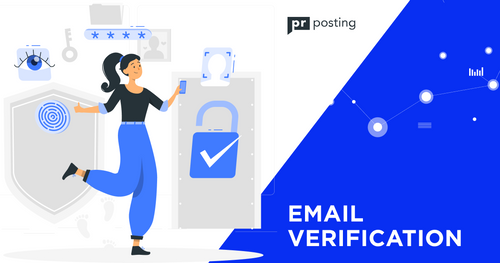In today's interconnected digital landscape, email verification is paramount. Whether you're creating a new account, resetting your password, or ensuring the legitimacy of an email address, email verification links play a crucial role. In this comprehensive guide, we'll delve deep into the realm of email verification links, exploring their significance, how they work, and the tools and techniques to generate them effectively.
Understanding Email Verification Links
Email verification links, also known as confirmation links or activation links, are URLs sent to a user's email address to confirm the validity of the provided email or to verify an action, such as setting up a new account. These links serve several essential purposes:
- Authentication: They confirm the user's control over the provided email address.
- Security: They ensure that only authorized users can access certain features or data.
- Account Recovery: They enable users to reset passwords securely.
How Email Verification Links Work
The mechanics behind email verification links are straightforward:
User Request: A user initiates a registration or password reset process, requesting an email verification link.
Link Generation: The system generates a unique, time-limited URL containing a token.
Email Delivery: The URL is sent to the user's provided email address.
User Action: The user clicks the link, which opens in a web browser, confirming their email or performing the requested action.
Token Validation: The server verifies the token's validity, completing the email verification process.
Why Email Verification Links Matter
Email verification links offer numerous benefits:
Security: They enhance security by ensuring that only legitimate users can access sensitive information or features.
Spam Prevention: They mitigate spam and fraudulent accounts by confirming the authenticity of email addresses.
User Experience: They simplify account setup and recovery, improving the overall user experience.
Data Accuracy: They contribute to accurate and reliable user data, vital for analytics and marketing efforts.
Generating Email Verification Links
Generating email verification links can be achieved through various methods and tools, including:
Temporary Email Services: Services like Temp-Mail and Generator.email offer temporary email addresses and associated verification links for testing purposes.
Firebase Authentication: Firebase provides comprehensive documentation on generating email action links for authentication and account management.
AWS SES Identity Management: Amazon SES offers identity management features for generating email verification links when using SES for email delivery.
Custom Development: For custom applications, developers can create their email verification link generation logic.
Common Questions About Email Verification Links
1. How long are email verification links valid?
- The validity period varies but typically ranges from a few minutes to several hours.
2. Can email verification links be reused?
- No, email verification links are usually designed for one-time use to enhance security.
3. What happens if I don't click the verification link?
- Failure to click the verification link within the specified timeframe may result in the link expiring, requiring a new request.
4. Can email verification links expire?
- Yes, email verification links typically have an expiration time to ensure security.
5. Are email verification links secure?
- When properly implemented, email verification links are secure and protect against unauthorized access.
In conclusion, email verification links are the cornerstone of secure and user-friendly online interactions. By understanding their importance, mechanics, and the tools available for generating them, you can ensure the integrity of user data, enhance security, and create a seamless user experience. Master the art of generating email verification links and elevate your online presence to new heights.



